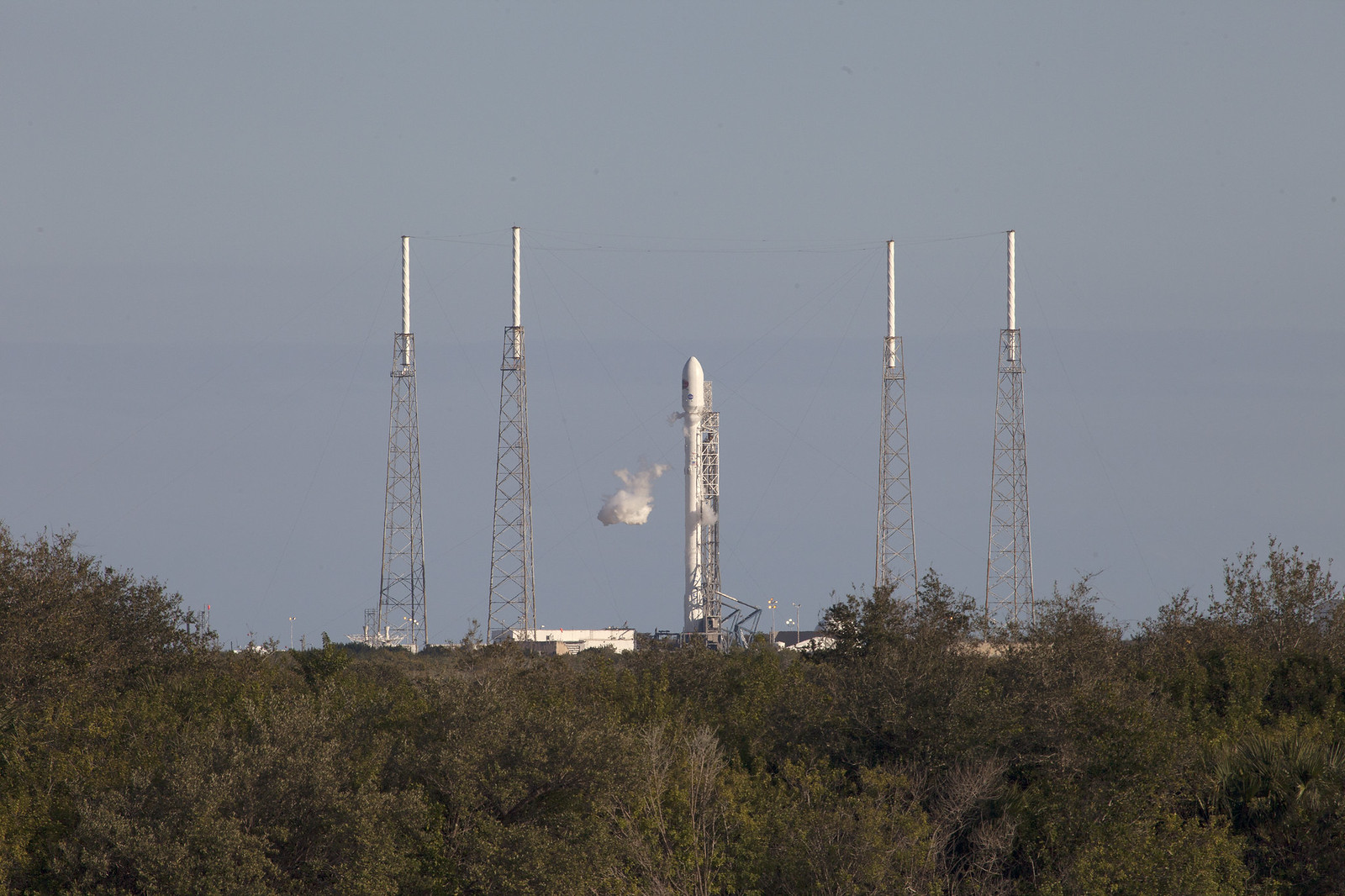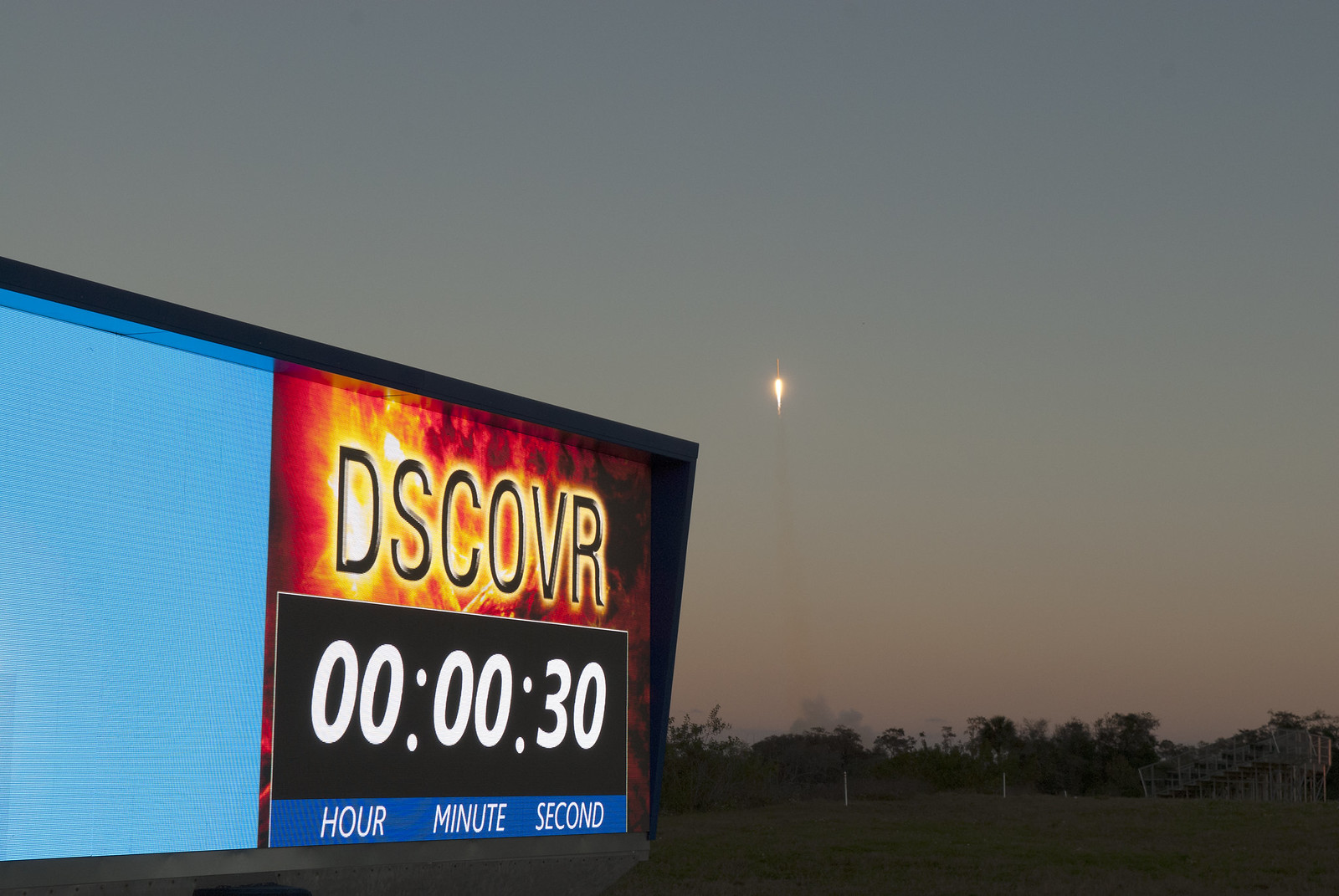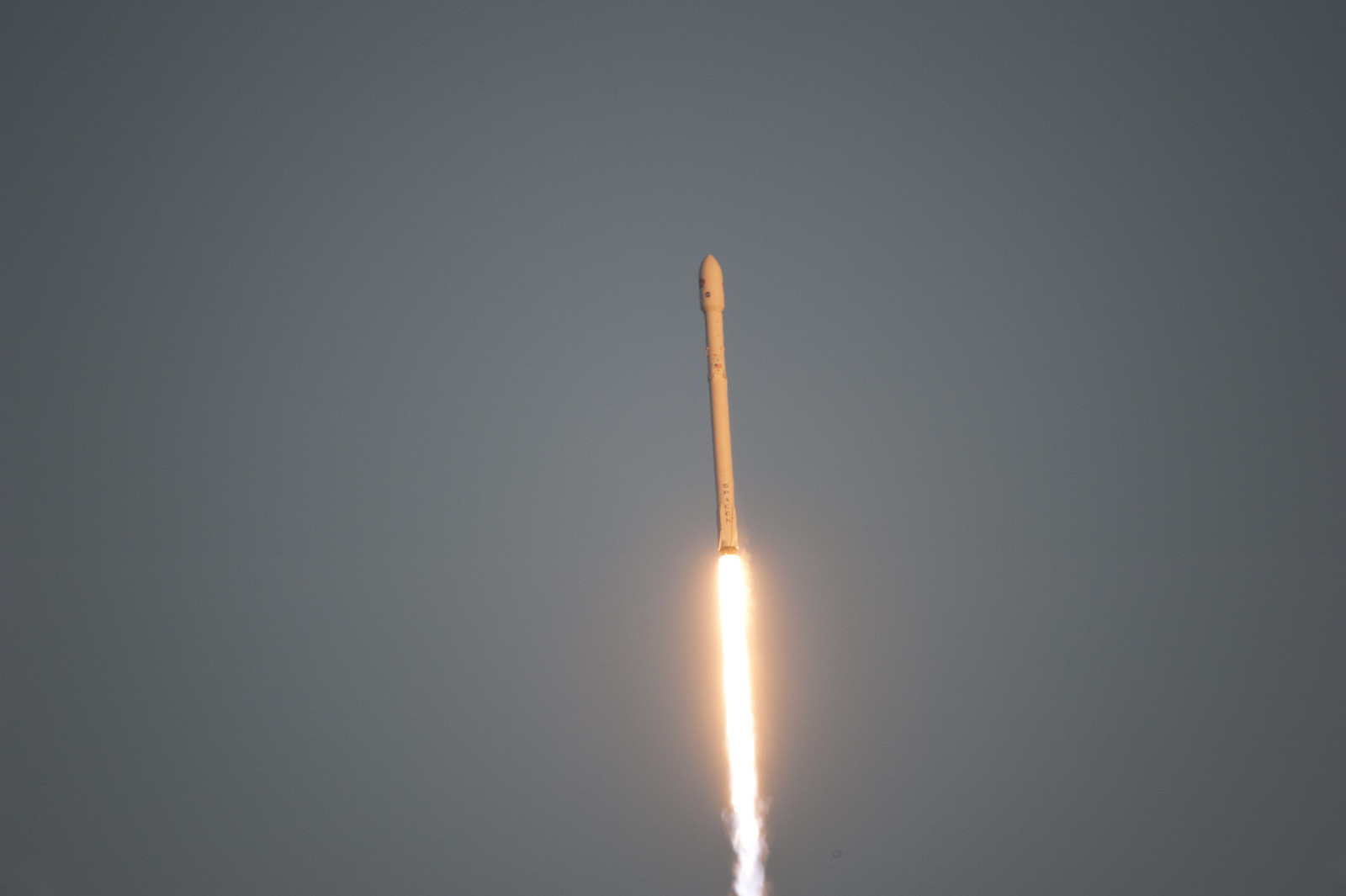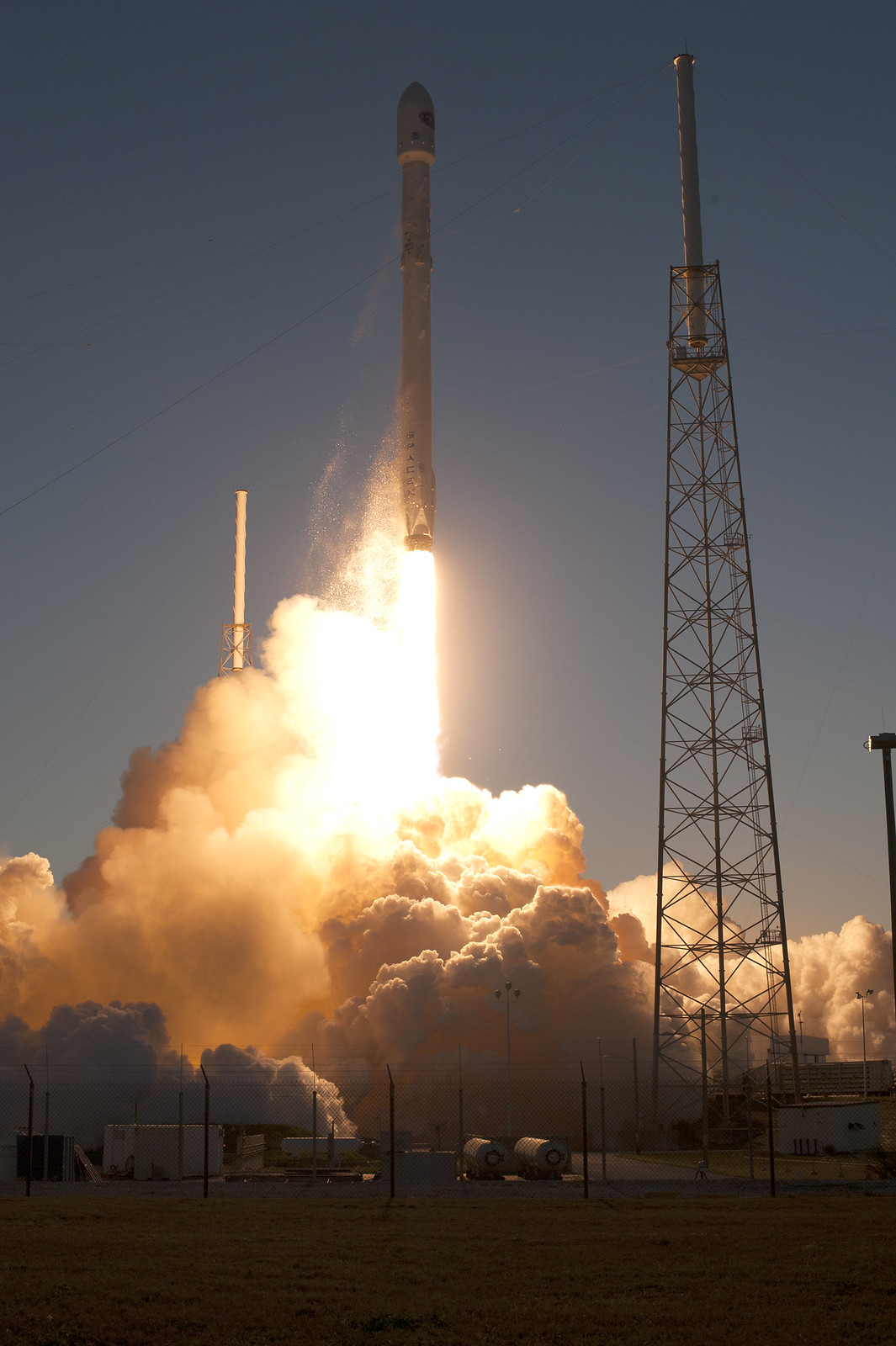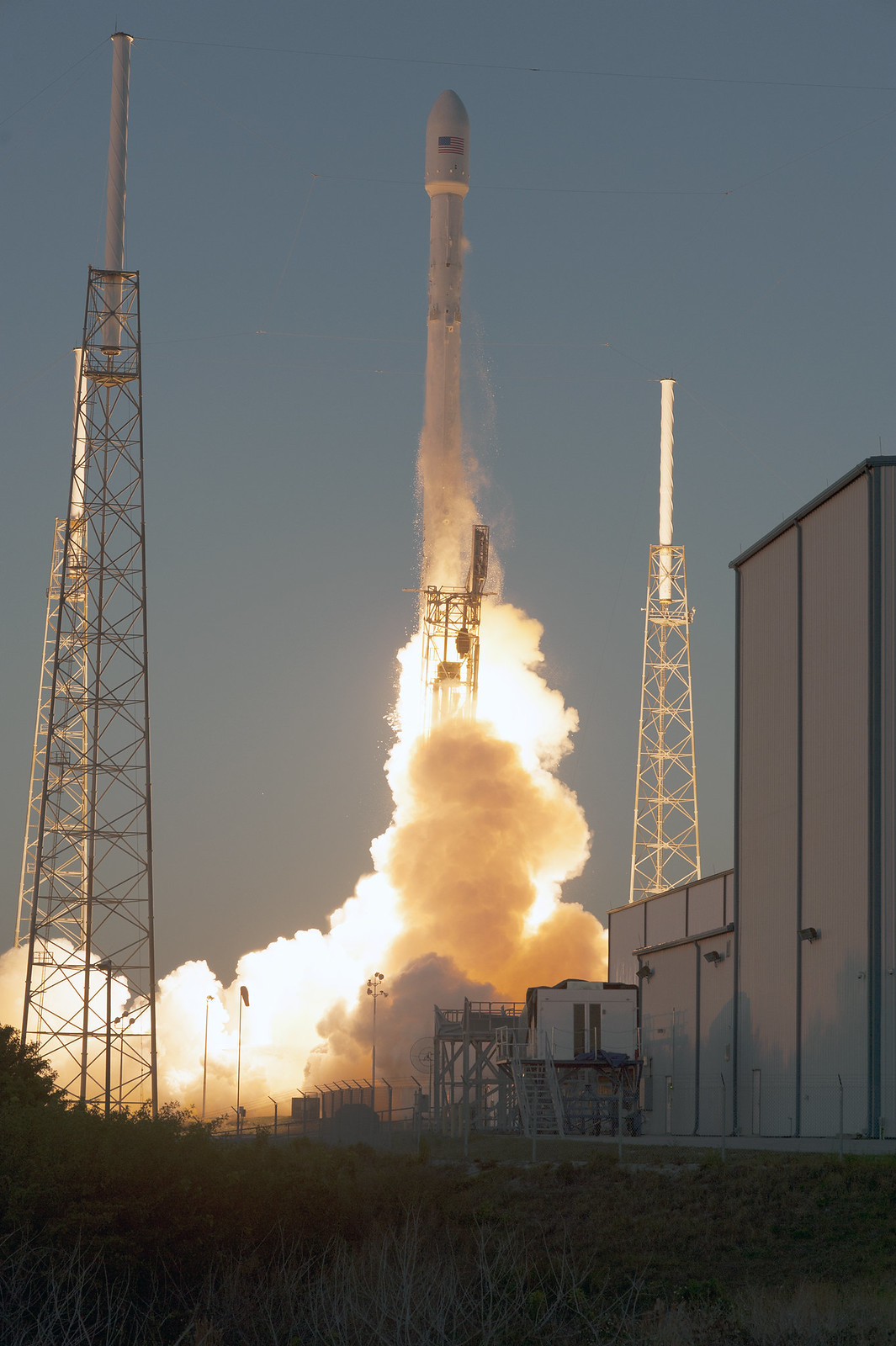Nation’s first operational satellite in deep space reaches final orbit
Satellite expected to begin operations this summer
June 8, 2015
More than 100 days after it launched, NOAA’s Deep Space Climate Observatory (DSCOVR) satellite has reached its orbit position about one million miles from Earth.
Once final instrument checks are completed, DSCOVR, which will provide improved measurements of solar wind conditions to enhance NOAA’s ability to warn of potentially harmful solar activity, will be the nation’s first operational space weather satellite in deep space. Its orbit between Earth and the sun is at a location called the Lagrange point 1, or L1, which gives DSCOVR a unique vantage point to see the Earth and sun.
Data from DSCOVR, coupled with a new forecast model set to come online in 2016, will enable NOAA’s space weather forecasters to predict geomagnetic storm magnitude on a regional basis. Geomagnetic storms occur when plasma and magnetic fields streaming from the sun impact Earth’s magnetic field. Large magnetic eruptions from the sun have the potential to bring major disruptions to power grids, aviation, telecommunications, and GPS systems.
“DSCOVR will trigger early warnings whenever it detects a surge of energy that could cause a geomagnetic storm that could bring possible damaging impacts for Earth,” said Stephen Volz, Ph.D., Assistant Administrator for NOAA’s Satellite and Information Service.
DSCOVR will eventually replace NASA’s Advanced Composition Explorer (ACE) research satellite as America’s primary warning system for solar magnetic storms headed towards Earth. ACE will continue to provide valuable research data to the science community.
In addition to space weather-monitoring instruments, DSCOVR is carrying two NASA Earth-observing instruments that will gather a range of measurements from ozone and aerosol amounts, to changes in Earth's radiation budget—the balance between incoming radiation (largely from the sun) and that which is reflected from Earth. This balance affects our climate.
"DSCOVR has reached its final orbit and will soon be ready to begin its mission of space weather monitoring for NOAA and Earth observing for NASA," said Al Vernacchio, DSCOVR project manager at NASA's Goddard Space Flight Center, Greenbelt, Maryland.
NOAA’s Space Weather Prediction Center in Boulder, Colo., will begin using data from DSCOVR in its space weather forecasts as soon as DSCOVR is deemed operational.
The DSCOVR mission is a partnership between NOAA, NASA, and the U.S. Air Force. The Air Force provided the Space X Falcon 9 launch vehicle for the mission. NOAA will operate DSCOVR from its NOAA Satellite Operations Facility in Suitland, Maryland, and process the space weather data at NOAA’s Space Weather Prediction Center (SWPC) in Boulder, Colorado, one of NOAA’s nine National Centers for Environmental Prediction. SWPC will distribute these data to users within the United States and around the world. The data will be archived at NOAA’s National Center for Environmental Information.
DSCOVR also hosts NASA-funded secondary sensors for Earth and space science observations. The Earth science data will be processed at NASA’s DSCOVR Science Operations Center and archived and distributed by NASA’s Atmospheric Science Data Center.
NOAA’s mission is to understand and predict changes in the Earth's environment, from the depths of the ocean to the surface of the sun, and to conserve and manage our coastal and marine resources.







